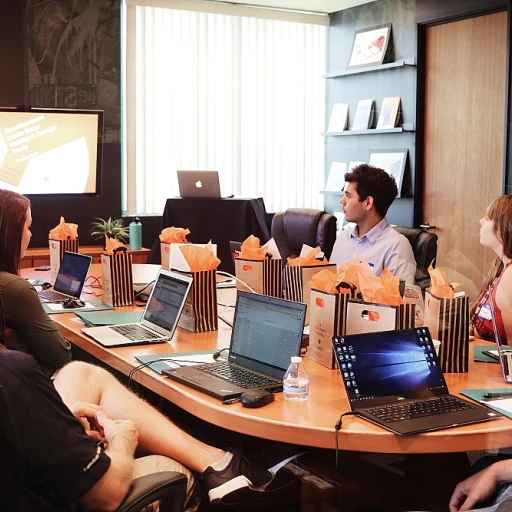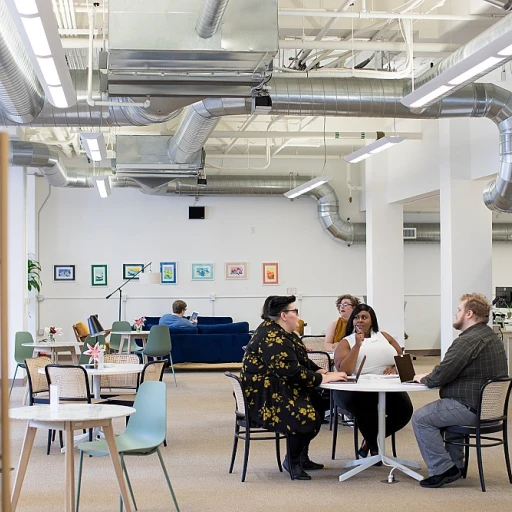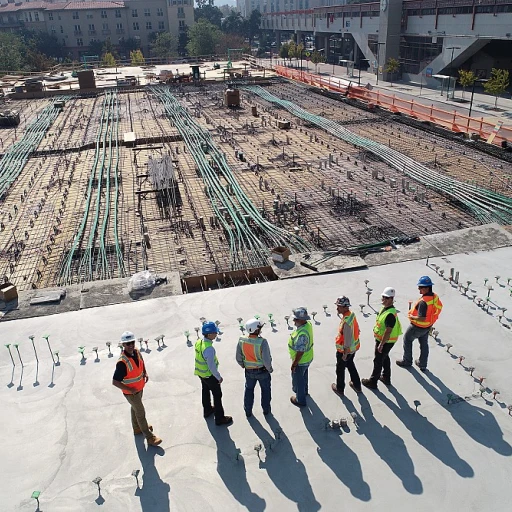
Understanding Virtual Reality in Education
Delving into the Realm of Virtual Reality in Education
Virtual reality has emerged as a groundbreaking tool in education, revolutionizing the way students engage with their learning environments. In essence, virtual reality in education involves using digital technology to create immersive and interactive experiences that replicate real-world settings. This technology empowers learners by placing them in a controlled environment where they can explore educational content in a dynamic and engaging manner. The concept of immersive learning through virtual reality allows students to experience scenarios that would be otherwise unattainable within traditional classroom settings. Imagine a virtual trip to ancient civilizations, where students can walk through historical sites or observe complex ecosystems up close. Such frontier learning opportunities unlock a deeper understanding and retention of information. At the core of this educational shift are virtual and augmented reality technologies that create an educational landscape unbounded by physical constraints. Students, ranging from higher education to primary levels, benefit from learning experiences that are as close to reality as possible without the associated costs or risks. Real-world applications, such as virtual environments simulating flight training or medical procedures, showcase the potential of VR to transform the educational sector. As we continue to explore virtual reality learning, educators and institutions are recognizing its value as a cost-effective method to enhance traditional teaching practices. Nevertheless, challenges and considerations need careful thought. Adopting the right technologies and approaches to ensure impactful learning is key, laying the groundwork for future trends in the domain of VR and upskilling.The Benefits of VR for Upskilling
Advantages of Virtual Reality for Skill Development
In the ever-evolving educational landscape, virtual reality (VR) serves as a cutting-edge tool, empowering students through immersive learning experiences. This technology facilitates an interactive and engaging environment, allowing learners to mimic real-world situations. Such immersive technologies can prove invaluable for upskilling across various domains.
One of the primary benefits of utilizing VR in education is its ability to offer real-life simulations. Whether it's virtual environments mimicking a laboratory or a historical site, students can practice and hone their skills in a safe controlled setting. This effectively reduces the risk associated with real-world errors, providing a cushion for learners to explore and experiment.
Moreover, VR in education has shown promise in improving retention rates. Due to its engaging nature, students are more likely to remember what they've learned in VR-enhanced lessons compared to traditional methods. This makes VR a cost-effective tool for higher education, potentially decreasing the need for costly physical resources while maximizing learning outcomes.
Integrating technologies like augmented reality alongside VR can further bridge the gap between theoretical knowledge and practical application. These immersive, augmented experiences facilitate a dual approach to learning, embodying both educational concepts and their practical utilization. Such integrated learning experiences can be instrumental in paving the pathway for future-ready skills.
As educational institutions and educators adapt to this new frontier in learning, VR stands to transform the educational landscape, offering a unique blend of technological innovation and personalized, interactive learning environments.
Challenges and Considerations
Addressing the Complexities of Implementing Virtual Reality
The integration of virtual reality in the realm of education, especially for the purpose of upskilling, certainly presents its fair share of challenges. Despite the promising outlook on immersive technologies and their potential to revolutionize learning experiences, practical hurdles must not be ignored.
One of the foremost challenges concerns the cost-effective access to VR technology. For many educational institutions, especially those catering to a large number of students, acquiring the necessary VR equipment can pose a significant financial burden. This includes not only the purchase of reality technology like headsets and software but also the ongoing maintenance and upgrades required to keep up with rapidly evolving immersive learning tools.
Another key consideration is the necessity of training educators in creating and managing virtual environments. A shift towards virtual and augmented reality education requires teachers to be adequately prepared to guide students through immersive experiences. This implies a steep learning curve for many educators who may not be well-versed in such cutting-edge technologies. Effective teaching in a virtual realm demands a firm understanding of both the potential and limitations of these experiences to ensure a safe controlled environment for learning.
Infrastructure also poses a challenge. Not all institutions, especially those in less-developed regions, have the technological foundation needed to support demanding VR applications. The disparity in technological advancement across educational sectors can impede universal access to VR’s benefits.
Moreover, designing an inclusive VR curriculum that accommodates diverse learning needs remains a critical task. Virtual environments have to be adaptable to suit various learning styles and preferences, requiring thoughtful input from educators, developers, and technology experts alike.
Addressing these challenges involves collaboration across the board. Engaging educators in the development and implementation phases ensures that VR-based learning is both practical and effective. Meanwhile, partnerships with tech companies may provide innovative solutions to bridge the gap in resources and expertise.
Case Studies: Successful Implementations
Real-life Applications and Impact Stories
The advent of immersive technologies has opened new opportunities in the arena of education and training. As institutions strive to embrace these advancements, several case studies highlight the positive outcomes of implementing virtual and augmented reality for upskilling. Notably, virtual reality education offers students a safe controlled environment to practice and master complex skills. For instance, higher education institutions have introduced virtual environments that replicate real-world scenarios, providing students with invaluable hands-on experiences without any physical risks. Another compelling example can be found in management education. Virtual reality technology allows learners to engage in simulated management experiences where they can practice decision-making and strategic thinking in a realistic yet risk-free setting. This has not only revolutionized the way management courses are conducted but has also significantly enhanced students' learning outcomes. The utilization of augmented reality in educational settings has also been noteworthy. Augmented reality overlays additional information onto the real world, creating a blended learning experience that stimulates curiosity and engagement among students. Educational institutions leveraging augmented reality in their curricula have reported increased retention rates and deeper understanding among learners. While immersive learning is still emerging, these real-world applications underscore its potential to transform the educational landscape. By providing diverse, engaging, and effective learning experiences, immersive technologies are paving the way for future frontier learning.Future Trends in VR and Upskilling
Anticipating Growth Areas in VR and Upskilling
The continuous evolution of virtual and augmented reality technologies is reshaping the educational realm, paving new pathways for immersive learning experiences. Predictions indicate that future advancements in reality technology will amplify its role in upskilling initiatives, propelling both students and professionals toward heightened levels of competence.
One pivotal trend poised to revolutionize learning is the integration of artificial intelligence within virtual environments. This pairing promises not only to enhance educational experiences but also to cater to individual learning styles, creating a more personalized and effective learning journey. As this integration flourishes, the boundaries of education virtual are likely to expand exponentially.
Moreover, the adoption of immersive technologies in higher education and corporate training is expected to increase, as these tools provide cost-effective alternatives to traditional methods. By replicating real environments in a safe controlled manner, learners can gain proficiency without the inherent risks, thus transforming teaching methodologies and managerial practices.
Augmented reality is also predicted to play a critical role in providing augmented experiences that will support education and management endeavors. By overlaying digital information onto the physical world, this technology can offer new dimensions of interaction and understanding that were previously unattainable.
The continued evolution and incorporation of these technologies will undeniably reshape frontier learning landscapes, underlining the necessity for educators and institutions to remain adaptable and open to innovative teaching strategies. As such, it remains imperative to stay informed on the emerging trends and potential transformational applications of virtual and augmented reality within reality education.
Practical Steps for Educators and Institutions
Practical Approaches for Educators and Institutions
Integrating new technologies into educational settings can be a daunting task, yet when done thoughtfully, it propels students into virtual environments rich with immersive learning experiences. Here are practical steps to streamline the process:
- Evaluate Needs: Before diving into reality technology, assess the specific educational and upskilling needs of your students. This step will help in tailoring the experience to fit educational objectives and maximize learning outcomes.
- Select the Right Tools: Choose the most suitable virtual and augmented reality tools that align with your curriculum. Immersive technologies are available for various budgets, making this transition cost-effective without compromising quality.
- Train Educators: Provide comprehensive training for educators to ensure they are comfortable navigating augmented environments. This training can enhance teaching strategies and effectively leverage the potential of virtual offerings.
- Create Supportive Infrastructure: Set up necessary infrastructure to support this new form of education. From stable internet connections to adequate hardware, a supportive environment enhances the seamless integration of technology.
- Plan for Continuous Improvement: Constantly iterate and seek feedback from students to refine and improve the learning environment. This approach ensures that the experience remains relevant and impactful.
- Incorporate Feedback Loops: Utilize insights gained from real-world experiences and adjust teaching methods accordingly. This will not only personalize the learning journey but also prepare students for future developments in immersive technologies.
While the integration of reality education can seem overwhelming, it's crucial to remember that its benefits far outweigh the challenges. By following these practical steps, educators and institutions can harness the power of reality-based learning, paving the way for an innovative educational future.












